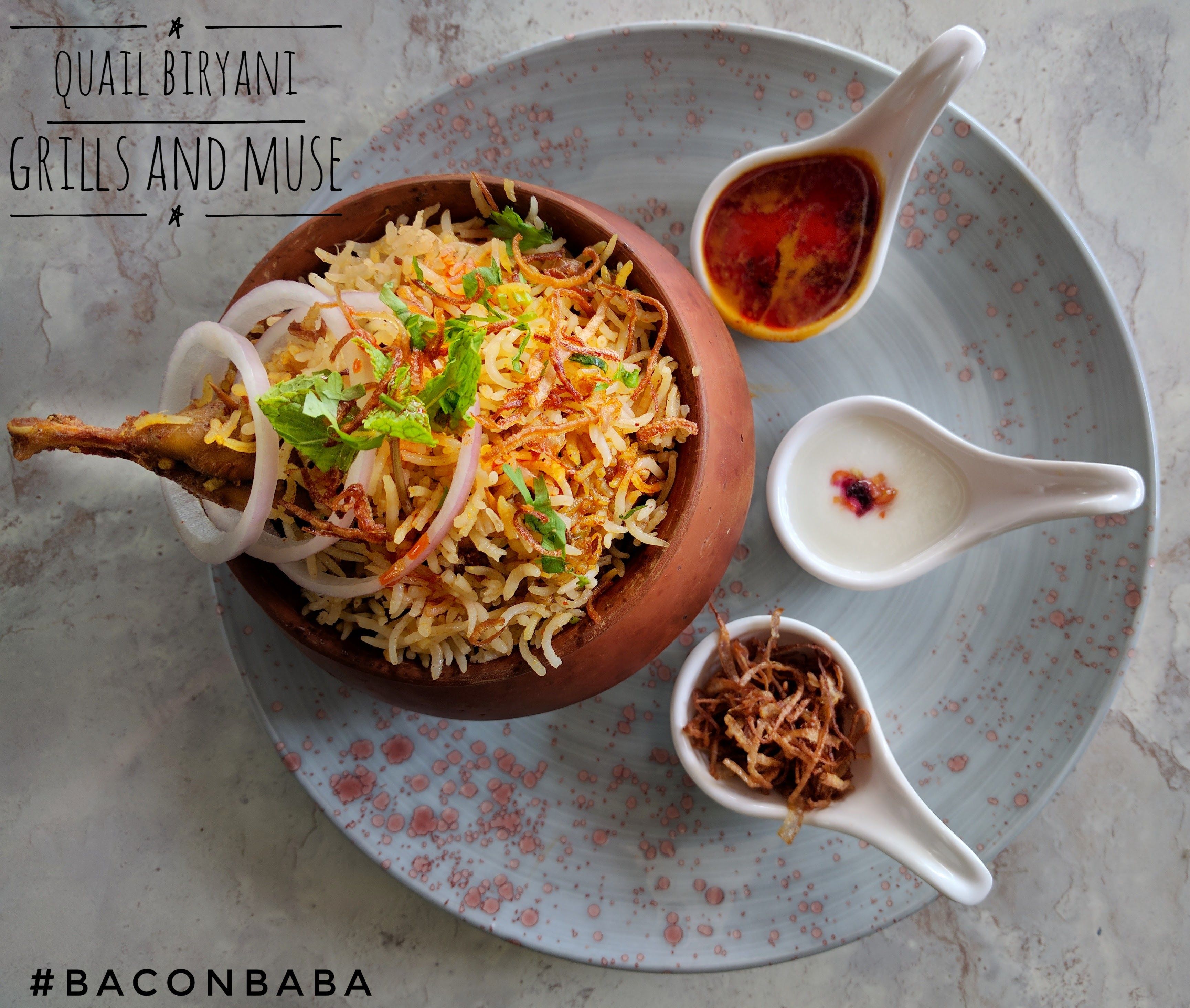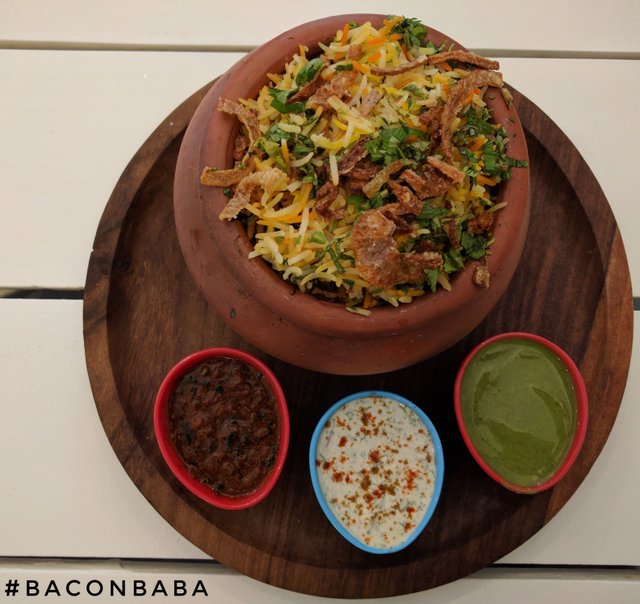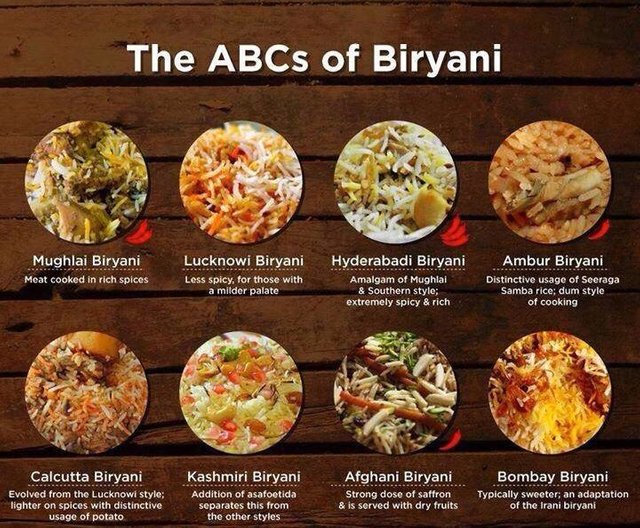Biryani is Bae - A History of Biryani - A #baconbaba story
Biryani is one of the most popular dishes across the Indian subcontinent. Primarily a rice based dish, in biryani, meat and rice are cooked separately before being layered and cooked together.
Etymology
The word "biryani" is an Urdu word derived from the Persian language, which was used as an official language in different parts of medieval India, by various Islamic dynasties. One theory is that it originates from "birinj", the Persian word for rice. Another theory is that it derives from "biryan" or "beriyan" (to fry or roast).
Origins
One could conclude that the biryani originated in Iran (modern day Persia). Another interesting story traces the origins of the dish to Mumtaz Mahal(1593-1631), Shah Jahan’s queen who inspired the Taj Mahal. It is said that she once visited army barracks and found the army personnel under-nourished. She asked the chef to prepare a special dish which provided balanced nutrition, and thus the biryani was created.
Nonetheless, popular journalist and columnist Vir Sanghvi strongly disagrees to this account. According to him “Biryani was an Indian invention, deriving from pulao which Muslim traders and invaders brought to our country.” While there are multiple theories how Biryani made its way into India, it is without doubt that the Persians were responsible for popularizing the dish among locals.
Ingredients
Ingredients vary according to the type of meat used and the region the biryani is from. Gosht (of either chicken or mutton) is the prime ingredient with rice. As is common in dishes of the Indian subcontinent, some vegetables are also used when preparing biryani.
The spices and condiments used in biryani may include ghee (clarified butter), nutmeg, mace, pepper, cloves, cardamom, cinnamon, bay leaves, coriander, mint leaves, ginger, onions, tomatoes, and garlic. The premium varieties include saffron. In all biryani, the main ingredient that accompanies the spices is the chicken and mutton; special varieties also use beef and seafood. The dish may be served with dahi (yogurt), chutney or raita, korma, curry, a sour dish of aubergine (brinjal), boiled egg (optional), and salad.
Dum Biryani
"Dum" Biryani is one very popular style of cooking biryani. Par-cooked food is kept in Handi with minimal amount of water. The lid is placed and sealed with a paste of flour and water. The flames are put out, leaving a bed of hot coals. The heat creates the steam, the steam condenses and rolls down the curved walls. In other words, the steam is choked before it can escape, leading to the term 'Dum Pukht'.
For some of the dishes, the coals may also be placed on the lid to distribute heat evenly.

Types of Biryani
While the origins of biryani can be traced back to Persia, India has made it its own. Every region boasts of its own special kind of biryani. Locals everywhere have personlized the biryani, giving a local spin on this flavorful dish. Here are some of the more popular varieties
Hyderabadi Biryani
Hyderabad is as synonymous with biryani, as Mumbai with the Vada Pao or Chennai with the Dosa. You can find Hyderabadi biryani restaurants scattered across every city in India. The flavors are distinguished by mace, ittar and kewra. Saffron and cardamom are also used. It is visually identifiable by the dark color of spices and rice.
Lucknowi Biryani
Another famous style of Biryani (and my personal favorite) is the Lucknowi biryani. Lucknow is the city of Nawabs who preferred a slightly milder palate. The Lucknowi biryani has remarkably less amount of spices as compared to the Mughlai variety of biryani. Originating from the Awadhi style of cooking, the Lucknowi biryani are very fragrant with a strong presence of Saffron.
Kolkata Biryani
Calcutta or Kolkata biryani evolved from the Lucknow style, when Awadh's last Nawab Wajid Ali Shah was exiled in 1856 to the Kolkata suburb of Metiabruz. Shah brought his personal chef with him. The poorer households of Kolkata, which could not afford meat, used potatoes instead, which went on to become a specialty of the Calcutta biryani. The Calcutta biryani primarily uses potatoes and eggs.
The Calcutta biryani is much lighter on spices and sometimes contains meat. The marinate primarily uses nutmeg, cinnamon, mace along with cloves and cardamom in the yoghurt based marinade for the meat which is cooked separately from rice. This combination of spices gives it a distinct flavour as compared to other styles of biryani. The rice is flavoured with ketaki water or rose water along with saffron to give it flavour and light yellowish colour.
Differences between Biryani and Pulao
Another common debate is the distinction between a biryani and a Pulao.
Colleen Taylor Sen lists the following distinctions between biryani and pulao:[19]
- Biryani is the primary dish in a meal, while the pulao is usually a secondary accompaniment in a larger meal
- In biryani, meat and rice are cooked separately before being layered and cooked together. Pulao is a single-pot dish: meat and rice are simmered in a liquid until the liquid is absorbed.
- Biryanis have more complex and stronger spices compared to pulao. The British-era author Abdul Halim Sharar mentions this as their primary difference: biryani has a stronger taste of curried rice due to a greater amount of spices.
Final Thoughts
Biryani is a concept that is very close to a foodie's heart. There are some (your's truly included) who believe a biryani MUST have meat. Veg biryani is a myth. However, a biryani may have vegetarian variants, as mentioned above.
You can always fine one variety of biryani to love. Each one holds on to that with their dear life. After all, Biryani is Bae!
What's that one dish that you hold dear? Let me know in the comments below!
Thank you for reading!
--
@baconbaba
Foodie. Carnovire. Couch Potato.
Follow my food-ventures at @baconbaba!
--
Website: https://baconbaba.com
Instagram: https://instagram.com/baconbaba
Twitter: https://twitter.com/thebaconbaba
Facebook: https://facebook.com/thebaconbaba
Zomato: https://www.zomato.com/rahulthegreatest
--
References:
- Wiki
- indiacurrents
- ABC of Biryani
- Links to photo sources embedded in the pics.








Love the title!!!
But yes Biryani is BAE!!!!
Oh yes! I absolutely ❤️ biryani!
Resteemed your article. This article was resteemed because you are part of the New Steemians project. You can learn more about it here: https://steemit.com/introduceyourself/@gaman/new-steemians-project-launch
Thanks @gaman
great story , thanks for sharing it, i invite you to visit my blog @hafidg to discovering more traditionals things using in our villages from morocco.
Morocco is one of my dream destinations. I hope to visit :)
I'm a vegan, but veg biryani is among my favourite dishes! Thanks for such a comprehensive post!
Like I said - there some for everyone. Hope you enjoy biryani @barquero
Thanks for the upvote. Do resteem!
--
@baconbaba
@baconbaba Steemit is gonna change lots of lifes, it has changed mine and many others but that is just the beginning. Followed
I hope so @teddieelga . Its just my third day at steemit, so hoping to learn more. Thanks!
Interesting article on Biryani @baconbaba... I am an ardent Biryani fan, especially the Hyderabadi variety... Have followed & upvoted your post!!
Thanks @samnix !
This looks amazing! This is a reaally good quality post. I'd love to see more amazing posts from you in the future @baconbaba. 😉
Thank you for the kind words @themessup
Please do upvote and resteem.
Followed back :)
As per my experience in Pune we get best biriyani at Hyderabadi House
@swaraj Hyderabadi House is good. But there are few better ones out there too. Watch my blog for the list :)
Thanks @ca-life :)
Disclaimer: I am just a bot trying to be helpful.
Yep. Reference / credits given to this pic.